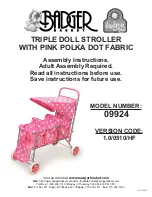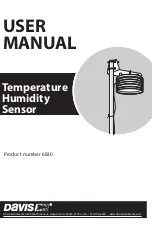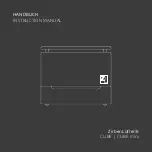
- Page 7 -
I.B. 8926-1
i) Run a grounding electrode conduc-
tor (ground wire) having a size in ac-
cordance with NEC 250-94 from the
grounding electrode to the MCC
ground bus terminal. See NEC 250-
91 (a) and 92(b).
c) Motor control centers not used as service
equipment nor as an incoming line section for
a separately-derived system, and used on ei-
ther a grounded or ungrounded system:
i) Ground the MCC ground bus by
means of equipment grounding con-
ductors having a size in accordance
with NEC 250-95 or by bonding to
the raceway enclosing the main sup-
ply conductors in accordance with
NEC 250-91 (b).
8.
When all wiring and adjustments are complete, close
all unit and wireway doors.
9.
In damp indoor locations, shield the MCC to prevent
moisture and water from entering and accumulat-
ing.
10. Unless the motor control center has been designed
for unusual service conditions, it should not be lo-
cated where it will be exposed to ambient tempera-
tures above 400C (1040F), corrosive or explosive
fumes, dust, vapors, dripping or standing water, ab-
normal vibration, shock or tilting.
JOINING COMPATIBLE SECTIONS
If two more shipping blocks are to be joined into an inte-
gral assembly, or a section added to an existing installa-
tion, splicing or horizontal bus, ground bus, neutral bus
and joining of the adjacent vertical sections must be
planned with the installation.
1.
Remove the side sheets from adjacent vertical sec-
tions to be joined. (These sheets will have been re-
moved from factory-assembled sections.)
2.
The horizontal bus splice plates and connection hard-
ware will be shipped with the MCC attached to one
end of shipping section. Refer to Figure 4. This
method provides the most convenient access to the
bolts, and eliminates the need to remove the horizon-
tal bus barriers in that structure. Should the existing
bus be oxidized, sand lightly with a fine aluminum
oxide paper. CAUTION - Do not use emery cloth or
any abrasive containing metal.
3.
Remove the upper horizontal wireway door from the
structure on the right side of the left-hand (LH) sec-
tion and remove the two-piece wireway barrier to
provide access to the ends of the bus in that sec-
tion.
4.
Move the section in place, aligning the upright struc-
tural channels and bottom channels. Alignment of
the section with floor sills and foundation provisions
will be facilitated by removing the bottom horizontal
wireway doors. Using the “U” type frame clamps
provided, clamp adjacent front upright channels to-
gether at the top, bottom and approximate center of
the vertical structure. This operation will be facili-
tated by removing the vertical wireway doors from
the lefthand structure and one or more drawout units
from the right-hand structure. See Part 9.
5.
If rear access is available, “U” clamps should also
be used to clamp the rear upright channels together.
In front-mounted-only structures this will require re-
moval of the adjacent back sheets. In a back-to-
back mounted structure, remove the vertical wireway
doors and one or more drawout units as above.
6.
Secure the sections to the floor sills or mounting bolts
as provided for the installation.
7.
Bolt the horizontal bus splice plates to the bus in the
left-hand structure, torquing all bus splice bolts to
275 pound-inches (23 pound-feet). See Figure 5.
8.
Replace all unit, bus barriers, and doors.
Fig. 4 Splice Plates Attached to RH Section
Summary of Contents for Freedom 2100
Page 26: ...Page 26 I B 8926 1...
Page 32: ...Page 32 I B 8926 1 Part 11 PLAN VIEWS...
Page 33: ...Page 33 I B 8926 1...








































